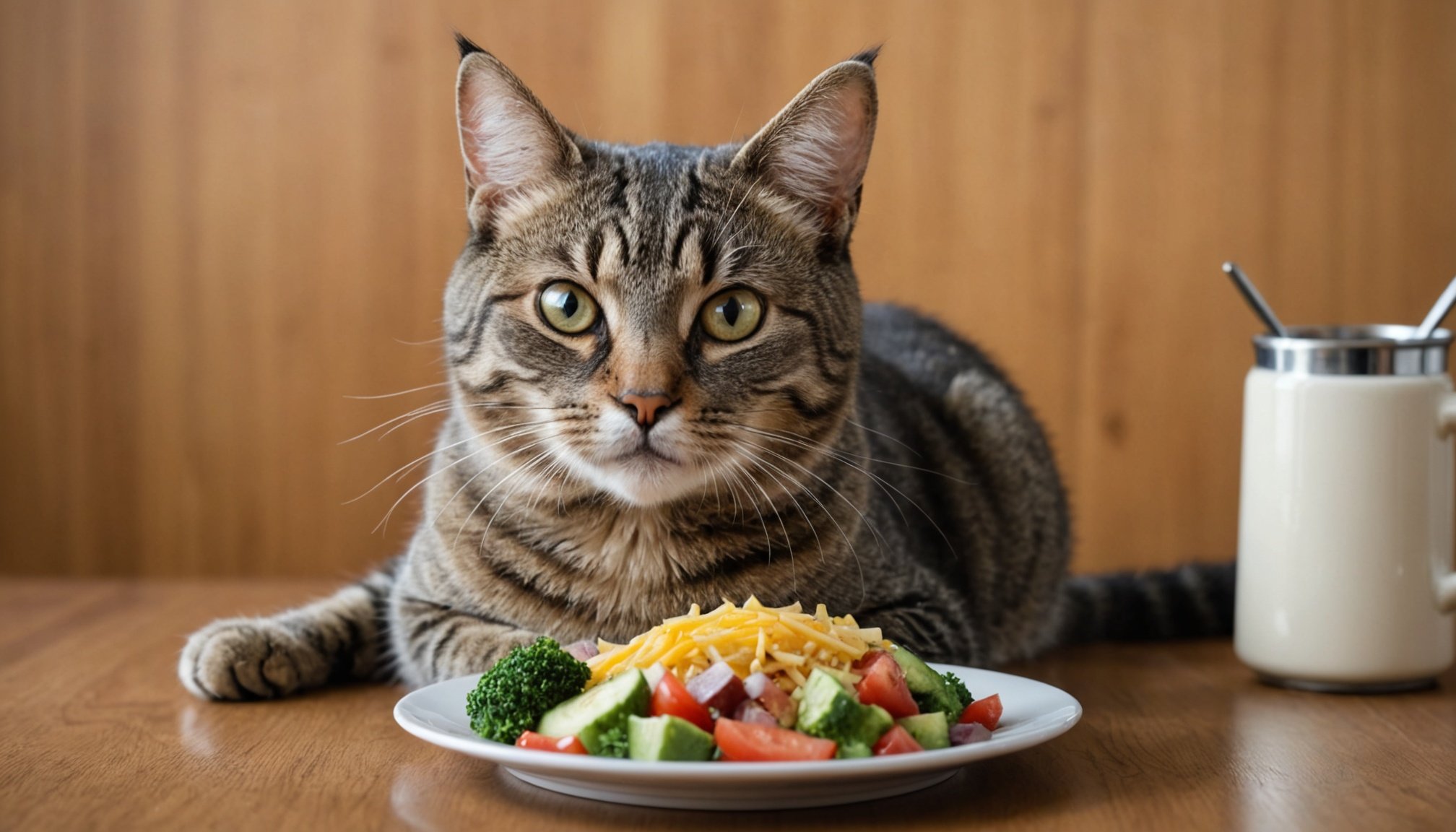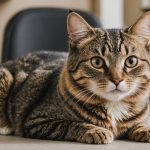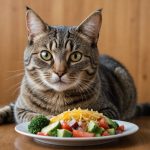Understanding Feline Obesity
Feline obesity is increasingly common, with alarming statistics revealing that over 50% of domestic cats in the U.S. are overweight or obese. This increasing prevalence highlights the urgency of addressing this issue.
Several factors contribute to feline obesity, including biological and environmental elements. A cat’s genetics can predispose it to gain weight more easily, while its environment often plays a significant role. Cats with limited opportunities for physical activity, combined with a high-calorie diet, are at high risk. Additionally, neutering alters metabolic rates in cats, potentially leading to weight gain.
Also to discover : Calm your cat: proven techniques for managing feline anxiety during fireworks and thunderstorms
The consequences of obesity in cats are severe and multifaceted. Most notably, obesity significantly increases the risk of developing diabetes. Obese cats are also prone to joint issues due to the extra weight they carry, which can lead to arthritis and reduced mobility over time. Furthermore, obesity can exacerbate heart disease and reduce a cat’s overall lifespan.
Owners must understand that feline obesity is not simply a cosmetic issue; it is a serious health concern requiring intervention. Recognising obesity’s causes and its significant impact on a cat’s health is the first step towards promoting a healthier lifestyle for your feline friend.
Additional reading : Top strategies for a smooth and stress-free vet experience for your feline friend
Evaluating Your Cat’s Diet
Evaluating your cat’s diet begins with a thorough cat diet evaluation. Understanding what your cat is currently consuming helps identify areas for improvement. A balanced diet is crucial to preventing obesity and ensuring long-term health. Start by assessing the ingredients and nutritional value of your cat’s food.
Nutrition for cats should include high-quality protein, essential vitamins, and minerals. Examine the content of fats and carbohydrates, as excess consumption can lead to weight gain. Pay special attention to nutrient ratios since they directly affect your cat’s health and well-being.
To make informed choices, learning to read and understand cat food labels is necessary. Look for labels that specify the source of the protein and avoid vague terms like “meat meal.” Ensure that the first ingredient is a named meat source, not a by-product.
Cat food labels also indicate the nutritional components essential for a healthy diet. Check for taurine, an amino acid crucial for heart and eye health, and ensure adequate fibre, which aids in digestion. By being diligent in these evaluations, you can fine-tune your cat’s diet, contributing to a healthier lifestyle and preventing obesity-related health issues.
Creating a Balanced Meal Plan
Designing a balanced meal plan is essential for a healthy, happy cat. Cat meal planning involves understanding dietary needs and offering nutritious options. This process not only supports weight management but also fosters overall wellness.
Start by assessing your cat’s specific dietary requirements. Cats are obligate carnivores, meaning protein is crucial. Incorporate high-quality meat sources in their meals, such as chicken or turkey. Including small amounts of fats and carbohydrates, like fish oil or pumpkin, ensures a rounded diet.
Consider portion control in your plan. Adjust portion sizes based on your cat’s activity level and age. Active or younger cats may require more calories compared to older or less active cats.
Meal prep for cats can simplify feeding and improve consistency. Prepare meals in advance, storing them in proper portions for easy serving. This approach not only saves time but ensures your cat receives the correct nutrients at each meal.
Selecting appropriate ingredients is a key part of a balanced cat diet. Explore grain-free options or those fortified with essential vitamins. Always transition to new foods gradually to prevent digestive upset. Following these tips will promote a healthier lifestyle and prevent obesity-related issues in your feline companion.
Implementing Portion Control
Implementing effective portion control for cats is key in combating feline obesity. Accurately measuring cat food is crucial to ensure that your pet isn’t consuming more calories than necessary. Begin by understanding the specific feeding guidelines for the type and brand of food you’re using, often listed on packaging. This provides a baseline for daily food portions.
Determining the ideal daily calorie intake involves considering your cat’s age, weight, activity level, and overall health. Consult your vet to tailor an appropriate calorie count specific to your feline’s needs. This personalized information is foundational in adjusting portion sizes accurately.
Measuring cat food is simplified with tools designed for precision, such as measuring cups calibrated for pet food, or automatic feeders programmed to dispense set amounts. These tools help maintain consistency, reducing the risk of overfeeding.
Keep in mind that portion control isn’t just about regulation, but fostering healthier eating routines. Measuring and monitoring can identify patterns or changes in appetite, which may warrant further investigation. Implementing these practices not only aids in effective weight management but enhances your cat’s overall health and well-being.
Establishing Feeding Schedules
Creating a consistent cat feeding schedule can significantly impact your feline’s health. Regular meal timing not only helps in maintaining a healthy weight but also contributes to overall wellness.
Feeding frequency should be tailored to your cat’s age and activity level. Kittens, for instance, require more frequent meals due to their rapid growth. Generally, young and active cats may benefit from two to three meals per day. On the other hand, senior or less active cats might do well with one or two structured feedings.
Incorporating a feeding schedule can help regulate portion sizes, leading to better weight control. It reduces food anxiety and begging behaviours by setting clear expectations. This structure supports healthier eating habits and prevents obesity.
When introducing a new schedule, consider a gradual transition to avoid digestive issues. Start by slightly shifting feeding times until you’ve reached the desired routine. This approach helps your cat adapt smoothly to the changes without stress.
Regularly monitor how your cat responds to the new timing and adjust as necessary. A well-planned feeding schedule promotes a balanced diet, ensuring your cat receives the right nutrients throughout the day.
Encouraging Healthy Eating Habits
Developing healthy cat habits is crucial for maintaining your feline’s well-being and reducing obesity risks. Behavioural modification plays a significant role in this process. Immediately apply these strategies to discourage begging and support better habits.
Engage your cat in environmental enrichment. Consider interactive toys and puzzle feeders that stimulate mental and physical activity. These tools can manage boredom and reduce the tendency to overeat. Moreover, these activities can transform mealtime into an exciting challenge, curbing food anxiety and promoting healthier routines.
Gradually adjust your cat’s meal expectations. Sticking to regular feeding times can set clear boundaries and prevent begging between meals. If food anxiety persists, consult your veterinarian for tailored advice. Addressing this issue promptly can avert future behavioural challenges and promote a balanced lifestyle.
Create a stress-free feeding environment to further mitigate anxiety. A quiet, consistent feeding area helps reduce tension. If multiple pets share the space, ensure each cat has their specific spot to eat peacefully. Implement daily monitoring to identify if anxiety decreases or further intervention is needed, ensuring your feline friend develops healthy eating habits effectively.
Regular Weight Monitoring
Regular weight monitoring is essential for managing a cat’s obesity and ensuring effective weight management strategies are in place. By consistently tracking your cat’s weight, you can identify trends and make necessary adjustments to their diet and activity levels.
To successfully track cat weight at home, consider using a digital weighing scale for accuracy. Make it a routine to weigh your cat at the same time of day each week, noting any changes. Look for gradual changes rather than sudden shifts, as these can indicate underlying health issues.
Weight management strategies incorporate combining dietary adjustments with increased physical activity. Tailor these strategies to your cat’s breed, age, and health. Veterinary advice plays a critical role in this process. Engage your vet routinely to ensure you’re on the right track and to seek their expertise when adjustments are needed.
When to seek further veterinary advice: If you notice drastic weight changes or if your cat’s weight does not improve despite your efforts, professional assistance is crucial. A vet can provide guidance on medical conditions affecting weight and recommend targeted solutions for fostering a healthier lifestyle in your feline friend.
The Role of Veterinary Support
Understanding veterinary support for obesity is crucial in addressing feline obesity effectively. Routine check-ups play a significant role in managing diet-related issues. Veterinarians provide vital professional advice by assessing overall health and identifying underlying health concerns contributing to obesity.
Engaging with a pet nutritionist can further enhance your cat’s diet plan. Nutritionists specialize in creating personalized, balanced meal plans tailored to specific health needs. They offer expertise in selecting quality ingredients and appropriate portion sizes, ensuring that your feline’s nutritional requirements are met. This collaboration supports weight management and overall wellness.
Regular consultations allow veterinarians to monitor progress and adjust strategies when necessary. Early intervention prevents complications associated with obesity, like diabetes and joint issues. Moreover, professional recommendations help in implementing sustainable changes that foster long-term health.
Resources for ongoing support include online forums and communities dedicated to pet health. Here, cat owners can share experiences and advice, enhancing collective knowledge. A network of professionals ensures that pet owners receive accurate information, solidifying the importance of veterinary support in the battle against feline obesity. This collaborative approach empowers cat owners to make informed decisions for their feline companions’ health.











